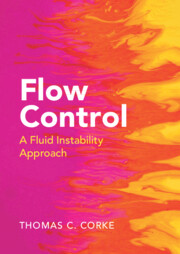328 results
8 - Concluding on the Meaning and Implications of Writing Climate Change
-
- Book:
- The IPCC and the Politics of Writing Climate Change
- Print publication:
- 30 June 2024, pp 158-170
-
- Chapter
-
- You have access
- Open access
- HTML
- Export citation
Chapter 9 - Consequences of Concept Formation in the Wild
-
- Book:
- Concept Formation in the Wild
- Print publication:
- 27 June 2024, pp 178-184
-
- Chapter
- Export citation
Myth 16 - That Darwin Banished Teleology from Biology
-
-
- Book:
- Darwin Mythology
- Published online:
- 30 May 2024
- Print publication:
- 06 June 2024, pp 181-192
-
- Chapter
- Export citation
Chapter 12 - Morris & Company
- from Part III - The Practical Arts
-
-
- Book:
- The Cambridge Companion to William Morris
- Published online:
- 03 May 2024
- Print publication:
- 23 May 2024, pp 161-173
-
- Chapter
- Export citation
Chapter 21 - William Morris’s ‘Medieval Modern’ Afterlives
- from Part V - Influences and Legacies
-
-
- Book:
- The Cambridge Companion to William Morris
- Published online:
- 03 May 2024
- Print publication:
- 23 May 2024, pp 283-297
-
- Chapter
- Export citation
Chapter 4 - The Thames Basin
- from Part I - Senses of Place
-
-
- Book:
- The Cambridge Companion to William Morris
- Published online:
- 03 May 2024
- Print publication:
- 23 May 2024, pp 57-70
-
- Chapter
- Export citation
Understanding a SPSS-aided packaging-free shopping practice
-
- Journal:
- Proceedings of the Design Society / Volume 4 / May 2024
- Published online by Cambridge University Press:
- 16 May 2024, pp. 1229-1238
-
- Article
-
- You have access
- Open access
- Export citation

Flow Control
- A Fluid Instability Approach
-
- Published online:
- 04 April 2024
- Print publication:
- 11 April 2024
25 - Contrariness and Contradiction in Constitutional Law
- from Part IV - Emerging Trends
-
-
- Book:
- Deciphering the Genome of Constitutionalism
- Published online:
- 14 March 2024
- Print publication:
- 21 March 2024, pp 330-344
-
- Chapter
- Export citation
Design of a wearable shoulder exoskeleton robot with dual-purpose gravity compensation and a compliant misalignment compensation mechanism
-
- Journal:
- Wearable Technologies / Volume 5 / 2024
- Published online by Cambridge University Press:
- 12 February 2024, e4
-
- Article
-
- You have access
- Open access
- HTML
- Export citation
The efficacy of different torque profiles for weight compensation of the hand
-
- Journal:
- Wearable Technologies / Volume 5 / 2024
- Published online by Cambridge University Press:
- 29 January 2024, e2
-
- Article
-
- You have access
- Open access
- HTML
- Export citation
Fractional order inspired iterative adaptive control
-
- Article
-
- You have access
- Open access
- HTML
- Export citation
A variable stiffness robotic gripper based on parallel beam with vision-based force sensing for flexible grasping
- Part of
-
- Journal:
- Robotica , First View
- Published online by Cambridge University Press:
- 12 December 2023, pp. 1-19
-
- Article
-
- You have access
- Open access
- HTML
- Export citation
2 - Reconsidering the Good of Improving Accountability
- from Part I - (Re)theorising Accountability in EMU
-
-
- Book:
- Substantive Accountability in Europe's New Economic Governance
- Published online:
- 23 November 2023
- Print publication:
- 07 December 2023, pp 45-62
-
- Chapter
-
- You have access
- Open access
- HTML
- Export citation
Active frequency selective surfaces: a systematic review for sub-6 GHz band
-
- Journal:
- International Journal of Microwave and Wireless Technologies , First View
- Published online by Cambridge University Press:
- 15 November 2023, pp. 1-15
-
- Article
- Export citation
3 - Natural Selection, Teleology, and Chance in Evolution
-
- Book:
- Theistic Evolution
- Published online:
- 19 October 2023
- Print publication:
- 02 November 2023, pp 92-126
-
- Chapter
- Export citation





